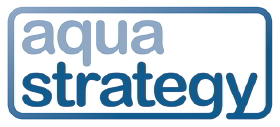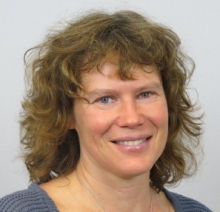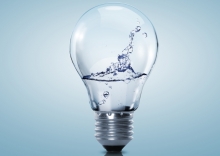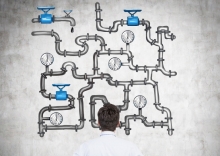Issue:
Data-driven solutions are on the rise in water utility networks. Keith Hayward spoke with TaKaDu CEO Amir Peleg and other industry representatives about progress seen at the recent conference of the SWAN smart water networks forum and in some of the topic areas discussed there.

Amir Peleg, CEO of TaKaDu and chair of the smart water networks forum SWAN, is in a confident mood following the forum’s annual conference in April, its latest since it was formed in 2010. ‘The event we just had is probably the first time I could say we are beyond the tipping point,’ he comments.
He backs this up by pointing to the growth in the number of SWAN members. He points also to the size and the type of the companies that have signalled their commitment to this developing area by joining, particularly corporates such as GE and IT-focused giants such as Qualcomm and Cisco.
It is a tipping point in terms of the endorsement of data-driven technologies generally, Peleg believes, and in terms of what the forum has to say about them – ‘all the SWAN messages about becoming smarter, more efficient, optimised, analytic, and so on,’ he adds.
The themes covered at the conference provide an indication as to where the water utility world is at as far as smart networks are concerned. Peleg mentions, for example, data security and cyber security, for which panel discussions included participation of Microsoft. ‘It is not just discussion for the sake of discussion, but [about] convincing the industry that moving to the cloud is a secure channel to work with,’ he comments. Another is the current discussion around the internet of things and smart cities, and how water utilities fit into that, while another key area was sharing experiences of using the data that is being collected to implement solutions in networks.
The smart water journey
One of SWAN’s broad messages for water utilities is that they should view their engagement with the opportunities around smart networks as a journey. This has implications for smart water technology and service providers: utilities need to be on that journey if they are to take up the new opportunities. Peleg experiences this first hand with his company, which provides a cloud-based system for managing ‘events’ in water networks.
TaKaDu has announced some business successes in recent months, including one in which its existing customer Unitywater in Queensland, Australia, is to extend the TaKaDu offering to smaller neighbouring utilities. In Chile, the company announced recently that it has formed a partnership with integrator G&A Consultants to offer TaKaDu’s solution to the water sector there. Meanwhile, this month TaKaDu has announced that Taiwan Water Corporation, the country’s national water company, has agreed to pilot the system in cooperation with TaKaDu’s partner in Taiwan, eHow.
‘I think that there is a journey,’ says Peleg. ‘If a certain water utility is not ready for the journey, then they are not interested in any of us in the SWAN community.’ Utilities need to make the decision that they want to move in this direction, decide which areas of their operations are priorities, and look at what they need to implement to achieve their aims – a process which can take a number of years. ‘The advice I give CEOs is that, if you are making a decision that’s where you want to go, you should start as soon as possible, because the journey will still take you two, three or five years,’ he adds.
This process includes the need for the utility to shape its activities to incorporate the new solutions within its processes. This applies when utilities move to using enterprise resource planning (ERP) software, and Peleg notes that it applies for his company’s product. ‘TaKaDu is not just a device, it is a complex enterprise class software,’ he says. Utilities need to be prepared to accept the need to change their internal processes if they want to be become more efficient. ‘It is not just a case of buying a software, switch it on, and that’s it. You have to change the way you operate,’ he adds.
Why make the journey?
One obvious reason why a water utility may decide to embark on a journey to a smarter future is because there is a clear business case to do so. In this important area, evidence is still lacking. ‘This is still a barrier. People are still asking, where’s the business case, where’s the return on investment? I don’t think we have a concrete answer to it,’ says Peleg.
He is nonetheless confident that utilities should head in this direction, and that this view was shared by those at the conference. ‘Everybody, among all presenters, utilities as well as vendors, we had a unanimous vote that it is not a question of if there is a business case. We are all sure that there is a business case, and that business case will be proven easily within a couple of years,’ says Peleg.
There could be another motivation for utilities to act: regulation. This is essential, Peleg believes, if the sector is to become more efficient and tackle issues such as leakage. Smart, data-driven solutions have a role to play in achieving this efficiency, Peleg does not believe that regulators should stipulate what the solutions should be. Instead they could focus on outcomes. ‘I don’t think regulators should intervene and force [utilities] to do something specific,’ he says. ‘Regulation should intervene in measuring the end result, like customer service level or the overall efficiency of the network. Try to create objective ways to measure.’
There are countries around the world where regulation has progressed, such as Australia, Israel, the UK, and Brazil. ‘Things are moving; maybe they should move faster,’ says Peleg, adding a note of urgency to his message: ‘If the industry is not regulated in the right direction, we are losing. We are losing time, we are losing money, we are losing water.’
The data challenge
‘Water companies have realised that there is a huge amount of value in collecting data,’ says Dr Mike Bold, head of Smart Networks at WRc, who led a SWAN conference session on maximising the power of data.
‘Collecting the right data, in a timely fashion can enable companies to make better operational decisions and optimise the working of the network. However the collection of data soon leads to a situation where there is more data than can be viewed and analysed manually. The issue facing many water companies especially in the UK is that they are Data Rich, Information Poor (DRIP). The data needs processing to turn in to action required information.
‘The challenge is to work out what information is required for engineers and managers to be able to run the network. The right data then needs to be collected in the right way, automatically analysed and prioritised in order of criticality and presented as simply as possible. This then enables engineers to focus on the key issues facing the network whilst the majority of the network is passively monitored with no need for engineering intervention. This process sounds simple, but requires engineering knowledge along with data and analytic understanding to set up. It is also a big culture shift, relying on technology to potentially make decisions on network operation. There is some great progress being made and we at WRc are eager and well placed to help water companies become ever more data and information driven.’
The water quality opportunities of smart networks
‘There is an explosion worldwide to develop smart cities to improve overall sustainability for citizens,’ says Ken Thompson, president of SWAN and Deputy Director Intelligent Water Solutions at CH2M, who chaired a SWAN conference session on enhancing water quality and water safety.
‘Having reliable water that achieves the necessary quality and quality requirements is the most critical requirement to creating a smart city. Managing water quantity and water quality at an acceptable cost are challenges that cities face daily, both equally important for different reasons. Specifically, managing water quality in a water system requires real time understanding of unusual anomalies and changes in the source water, optimization the water treatment to meet typical variations, and incorporating smart water quality sensors in the distribution system to understand when problems are happening and being able to rapidly respond and correct them.
‘Advances in sensor technology have created massive data sets for utilities to manage and the need to incorporate big data analytics and advanced spatial visualization tools have become an essential part of a smart water quality system. Data alone is meaningless; incorporating data analytics and visualization tools creates new information and knowledge required for sound decision making. Last of all, utilities need to have a response plan in place to be able to rapidly respond to the information and knowledge created from the analysis of the data. Attempting to figure out how to respond during an emergency situation prolongs the incident, which broadens the impact to the end users.
‘Challenges that utilities implementing smart water systems for managing and optimizing water quality in their systems face include a lack in confidence in remote water quality sensors, due often to not being familiar with the technologies, or because the utility tried sensors in the past during the early development period and they performed poorly. Another is the need for new additions to the workforce, such as data engineers and data scientists to be able to incorporate big data analytics into their activities. Both of these challenges can be overcome through a combination of education and working with technology providers to initially fill the staffing gaps and provide training to staff. The Smart Water Network Forum provides utilities worldwide with the technical resources to fill these needs through collaboration with their members.’
Related article: The water utilities getting ahead in the cloud
Keywords:
- TaKaDu, smart water utilities






